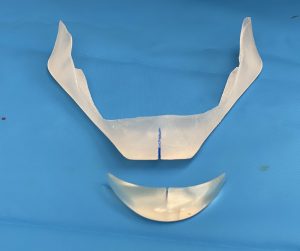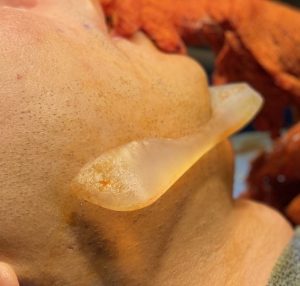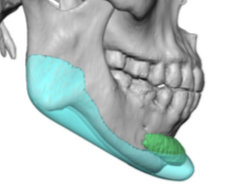Background: The shape of the lower jaw is determined by the development and growth of numerous bony elements dominated by the chin and jaw angles. The jaw angles in particular are of great importance because they are a pair of them and they serve as a primary growth center of the lower jaw. Thus as the jaw angle develops so does the rest of the jawline in front of it.
One of the most common jaw angle development deformities is the often described high jaw angle. This is aesthetically seen as lack of jaw angle definition as the jaw angle has not grown long enough. This is associated with a lack of forward jaw growth (chin deficiency) and a mandibular plane angle that is excessive and often greater than 30 to 35 degrees. While chin augmentation helps the lack of chin projection what lies behind it remains deficiency and may appear even more so.
The shape of the high angle jaw deformity can take various forms. Most commonly the jawline follows the inferior border of the chin straight back and then curves back up into the posterior border. This makes for an indistinct jaw angle shape but a smooth one. Less commonly the high jaw angle has a more unusual shape with a pronounced antegonial notch. In the more significant expression of this jaw angle shape the depth (height) of the antegonial notch is higher than the jaw angle point. This very irregular jaw angle shape is an interesting one which almost suggests that a strong pull of the masseter muscle caused a rotation of the jaw angle upward as it developed. This speaks to the relevance of why a pronounced antegonial notch, as opposed to a more common slight appearance of it, exists.
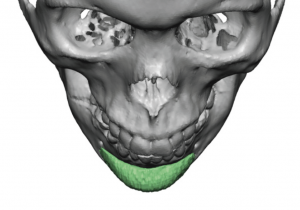
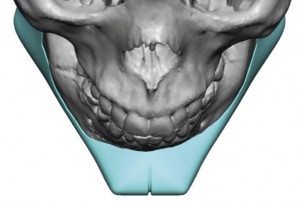

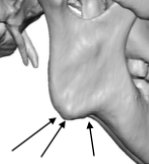
Case Highlights:
1) The high gonial angle jaw deformity lacks a defined jaw angle due to insufficient vertical growth and a pronounced antegonial notch.
2) An isolated chin implant in the high gonial angle jaw deformity often magnifies the deficient jawline behind it.
3) One benefit of a custom jawline implant in the high gonial angle jaw deformity is the creation of a straight and smooth connection between the jaw angles and chin. (elimination of the pronounced antegonial notch)
Dr. Barry Eppley
Indianapolis, Indiana







